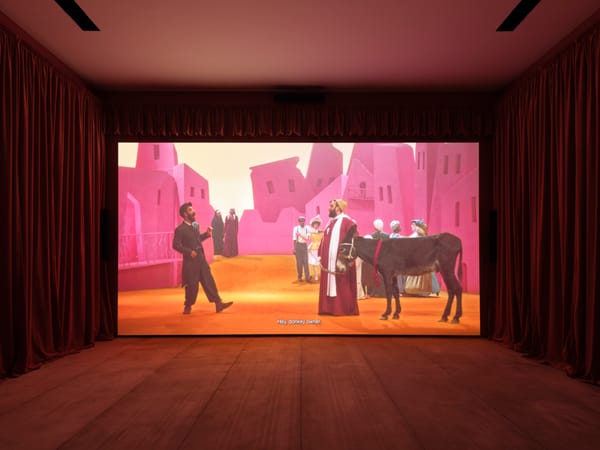Ideas
A Dose of Chaos: The 7th Bi-City Biennale of UrbanismArchitecture

The end of 2017 was a busy time for Shenzhen, with the seventh edition of Bi-City Biennale of UrbanismArchitecture (UABB) unfolding at various venues throughout the city. Carrying the theme “Cities, Grow in Difference,” UABB was jointly curated by Hou Hanru alongside architects Liu Xiaodu and Meng Yan. The main exhibition is located in Nantou Old Town, with five satellite venues located at Luohu, Yantian, Longhua (Shangwei and Dalang) along with Guangming New District. On top of these, 13 other collateral exhibitions are being held all over the city.
In the early 2000s, starchitect Rem Koolhaas led an in-depth study of “villages within cities” in the Pearl River Delta region; since then, this unique phenomenon of Chinese urbanization has been a topic of interest among architects and those engaged in international urban studies. UABB spotlights this occurrence—or spectacle—in a city that has grown at breakneck speed from a backwater town to a megacity with a population over 11 million in under 40 years. Such growth has led to urban planners failing to keep up, which is why some parts of Shenzhen are organized not unlike a small village. Nantou is one such example; its history can be traced back by 1700 years, and the neighborhood (or historic town) has been called the origin of Shenzhen and Hong Kong. Ming dynasty (1368–1644) walls and small temples can still be found in the area, but most of Nantou is now where migrant workers live temporarily, and the streets are lined with street food shops, markets and butcher shops. Art would be the last thing you’d think of here.


It is precisely this reason why 2017’s UABB is interesting. Chaos defines the area, with everything being louder than everything else, lending context to the biennial’s content. Street noise drowns out the performers on a rooftop, and all kinds of colorful banners distract the viewers’ attention from the biennial’s promotional posters. The security guards’ armbands are reminders that there is actually an exhibition in the village.
With presentations mounted in a former industrial building, it is easy to see that everything was made in a hurry, with plenty of dust and an unpleasant smell left behind. The exhibition is presented in three sections, namely “Global South,” “Urban Village,” and “Art, Making Cities.” Since architecture drives the biennial’s theme, all kinds of designs and plans are on view. Various artworks, mainly videos, focus on villages in the Pearl River Delta region, showing a side of Chinese urban life rarely seen by outsiders. A series of public talks, performances and workshops bolster the program and work in concert with the exhibition.

During my visit, I was asked several times on the street, by local shop owners, about what was going on. Like many other high-profile events, UABB has disregarded the local community. There is a particular note of dissonance in the “Art, Making Cities” section, which contains many works from artists, such as David Hammons, that are known for their outspoken social commentary. “Village” streets and the lives of people who live and work there remain turbulent and anarchic, and the residents of Nantou couldn’t care less about an art event that was taking place in their space. Conceptually, they have been displaced—which is what they face in real life, as Shenzhen marches on to become an ever-larger metropolis.

The seventh Bi-City Biennale of UrbanismArchitecture, “Cities, Grow in Difference,” will be on view at various venues in Shenzhen until March 15, 2018.
To read more of ArtAsiaPacific’s articles, visit our Digital Library.







